#Fred C. Brannon
Text
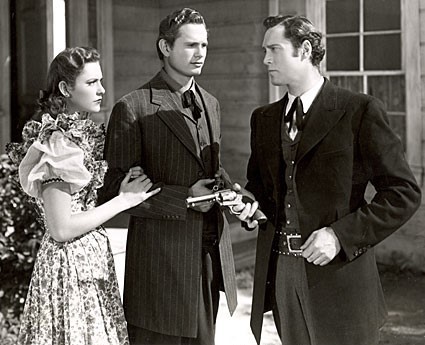
Linda Stirling-John Compton-Clayton Moore "Jesse James rides again" 1947, de Fred C. Brannon, Thomas Carr.
22 notes
·
View notes
Text
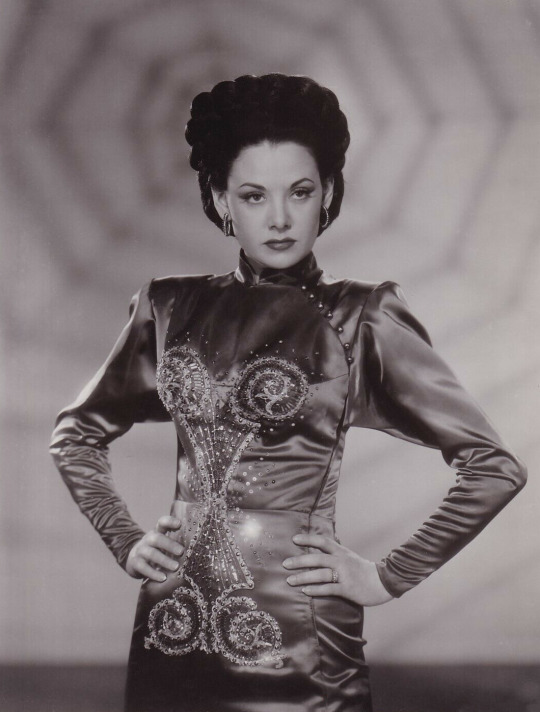
Carol Forman in The Black Widow (1947)
103 notes
·
View notes
Text
On March 20, 1947, The Crimson Ghost debuted in Portugal.


Here's some new art inspired by the horror / noir classic!
#the crimson ghost#fred c. brannon#republic pictures#film serial#crime thriller#noir#40s noir#noir thriller#the misfits#sci fi#retro futurism#b movies#movie art#art#drawing#movie history#pop art#modern art#pop surrealism#cult movies#portrait#cult film
1 note
·
View note
Photo
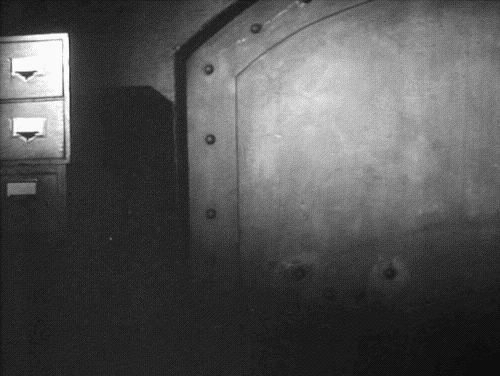
The Crimson Ghost (1946)
Republic Pictures
Dir. Fred C. Brannon & William Witney
750 notes
·
View notes
Text
Danger of the Canadian Mounted - Fred C. Brannon /... https://western-mood.blogspot.com/2023/08/danger
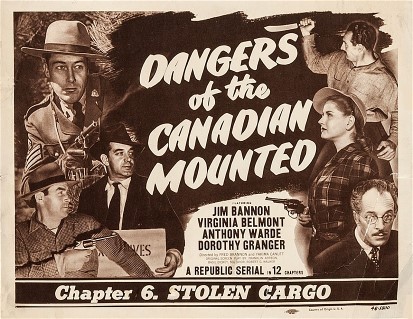
2 notes
·
View notes
Text
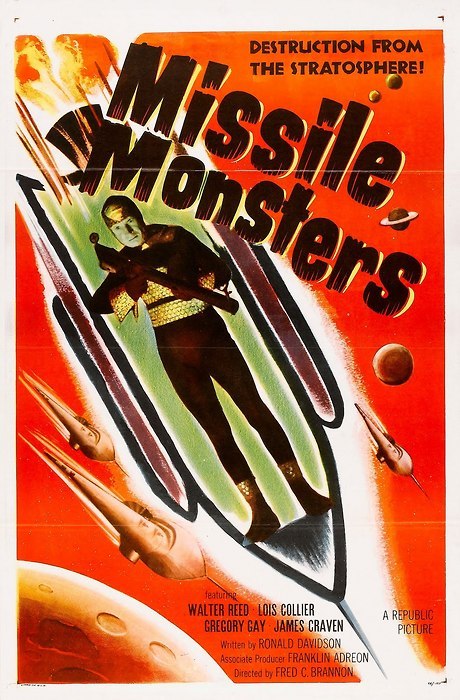
Movie poster by an unknown artist from the National Screen Service (#58-157) for the 1958 Republic Pictures B-movie Missile Monsters.
The film was cut together from clips from a 12-part serial called Flying Disc Man from Mars, which was also directed by Fred C. Brannon.
1 note
·
View note
Text
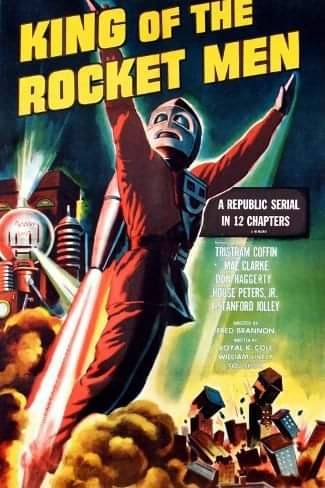
King of the Rocket Men es una serie de películas en blanco y negro de 12 capítulos de 1949de Republic Pictures , producida por Franklin Adreon , dirigida por Fred C. Brannon , protagonizada por Tristram Coffin , Mae Clarke , Don Haggerty , House Peters, Jr. , James Craven e I. Stanford Jolley .
Esta serie de películas se destaca por presentar al único personaje llamado "Rocket Man", un nombre inapropiado que los fanáticos aplicaron a los otros héroes propulsados por cohetes de la República que siguieron en sus series posteriores: Radar Men from the Moon (1952), Zombies of the Stratosphere (1952) y Commando Cody: Sky Marshal of the Universe (1953).
1 note
·
View note
Photo
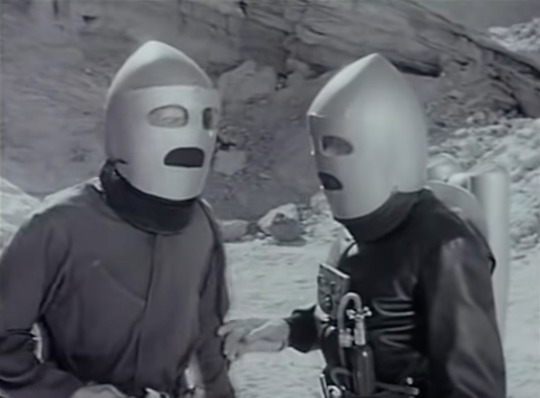
Radar Men from the Moon, Fred C. Brannon (1952)
I’m so sad to admit I wasn’t able to finish this one lol but honestly in love with those costumes, and the special effects are not bad at all for that time
0 notes
Text




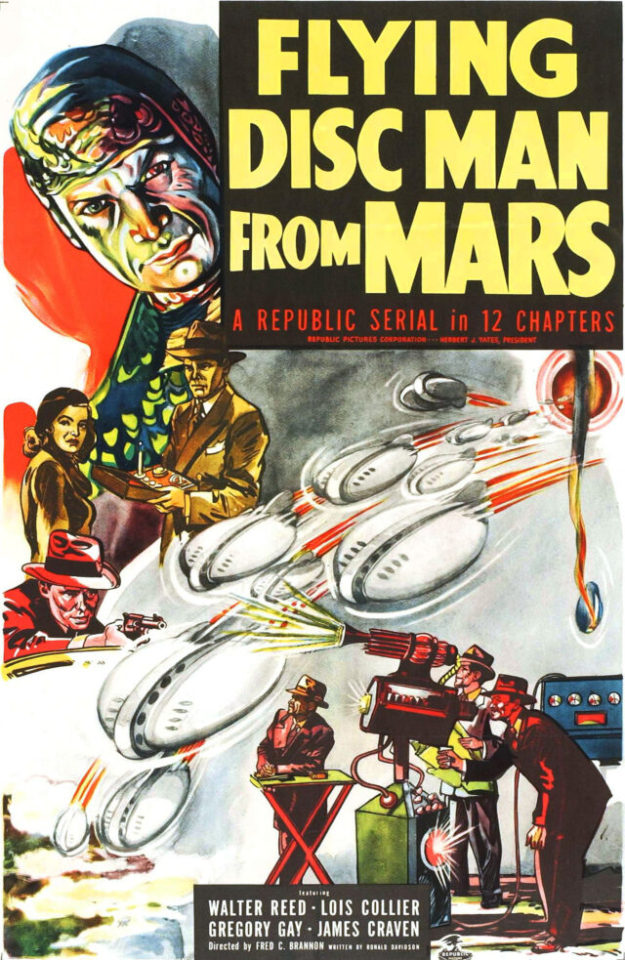
youtube
Flying Disc Man from Mars è un serial cinematografico d’avventura fantascientifico in bianco e nero, composto da 12 episodi, prodotto della Republic Pictures nel 1950. È stato diretto da Fred C. Brannon e i personaggi principali sono stati interpretati da Walter Reed, Lois Collier, Gregory Gaye James Crave, Harry Lauter e Richard Irving. Nel 1958 la casa di produzione Republic Pictures unì i 167 minuti del serial in un lungometraggio di 75 minuti, pubblicato con il nuovo titolo Missile Monsters.
#Flying Disc Man from Mars#1950s#fantascienza#republic pictures#Fred C. Brannon#Walter Reed#Lois Collier#Gregory Gaye James Crave#Harry Lauter#Richard Irving#Youtube
0 notes
Photo
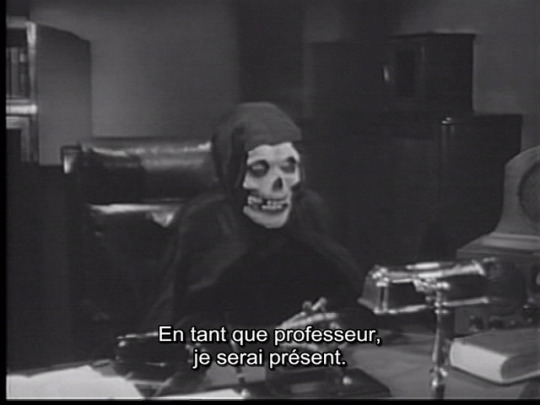
The Crimson Ghost (chapter 1: Atomic Peril), Fred C. Brannon, William Witney (1946)
Cinematography: Bud Thackery
| USA
36 notes
·
View notes
Text
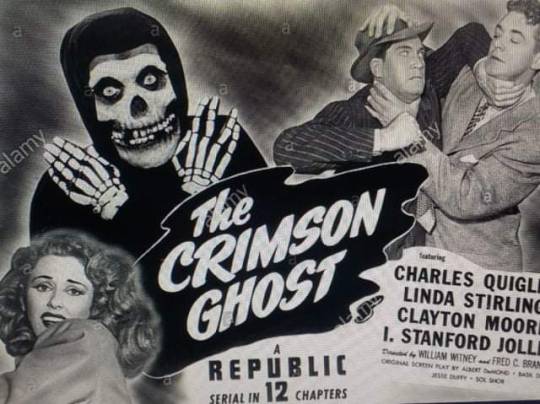
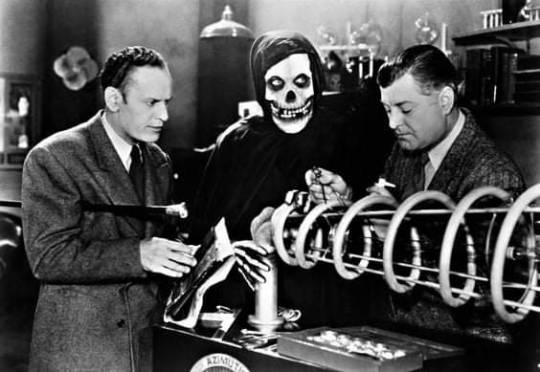
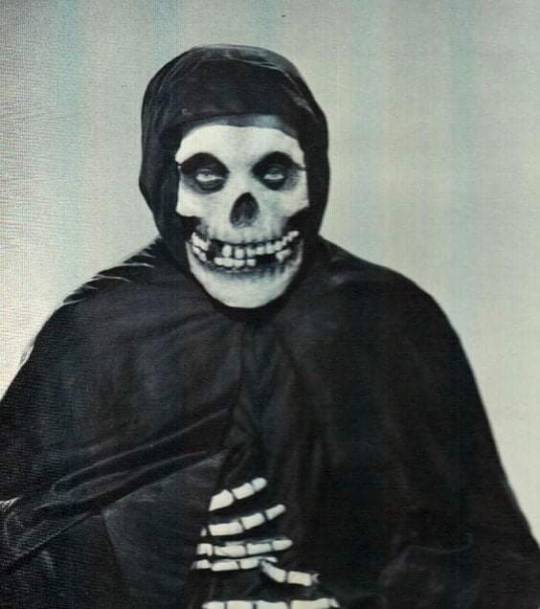

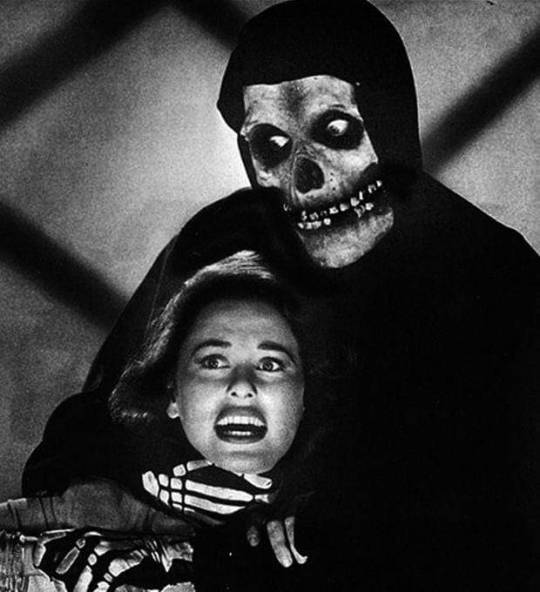
The Crimson Ghost (1946)
#The Crimson Ghost 1946#the crimson ghost#40's#classic of all time#The Crimson Ghost is a 1946 American film serial directed by Fred C. Brannon and William Witney.#Release date: October 26 1946 (serial)[#the Crimson Ghost has become somewhat of a pop culture icon due to the punk rock band Misfits
349 notes
·
View notes
Text
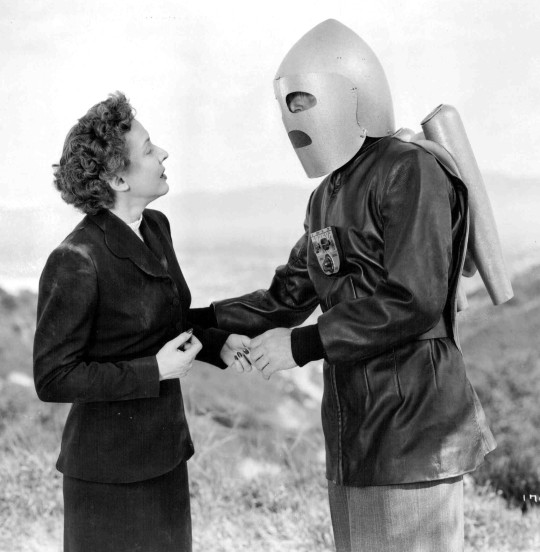
Mae Clarke-Tristam Coffin "King of the Rocket Men" 1949, de Fred C. Brannon.
20 notes
·
View notes
Photo



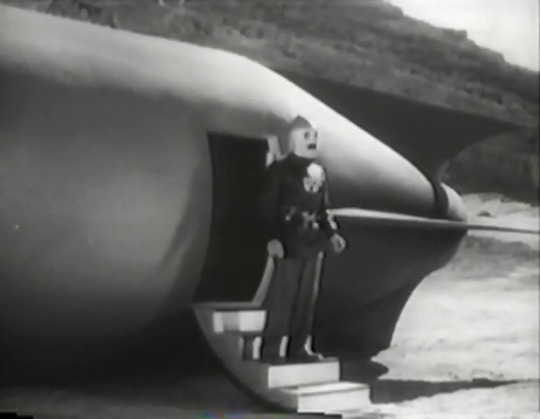
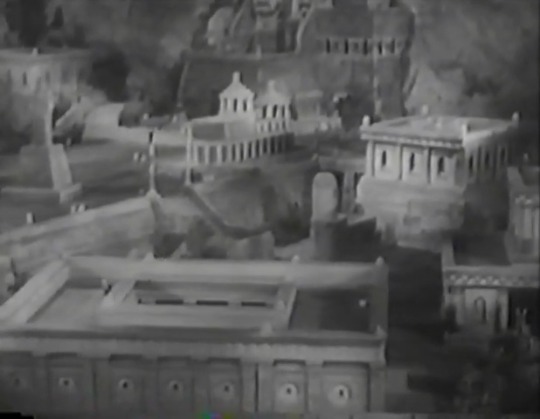

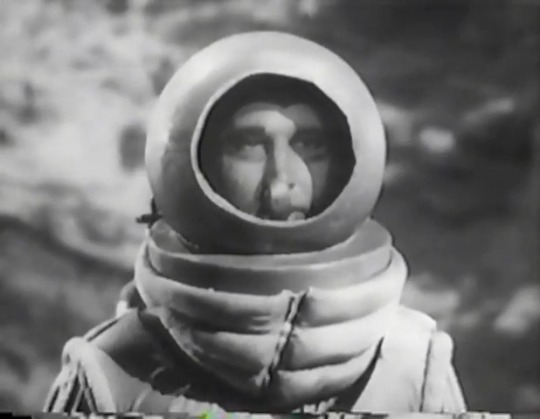
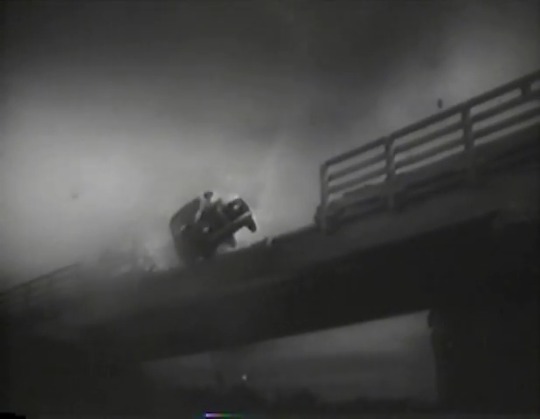
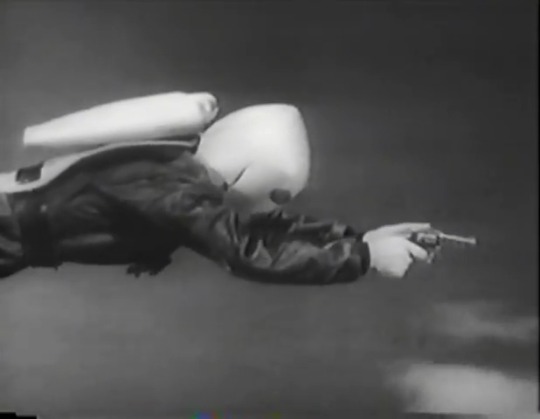
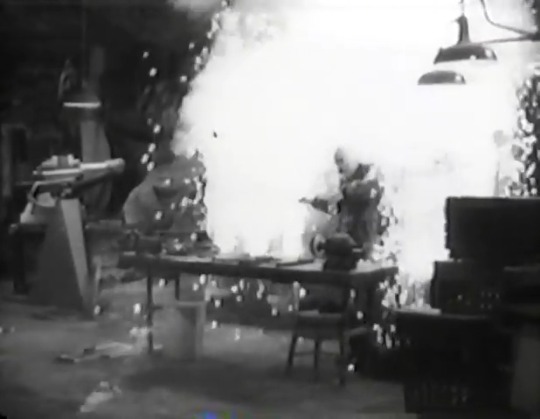
Radar Men from the Moon
Fred C. Brannon
1952
5 notes
·
View notes
Photo
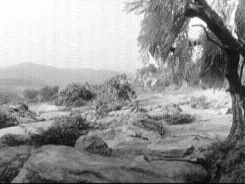

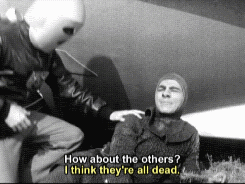



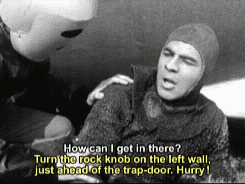

Leonard Nimoy playing Narab the Martian in...
Zombies of the Stratosphere
Chapter 12: Tomb of the Traitors (1952)
Republic Pictures. Dir. Fred C. Brannon.
#zombies of the stratosphere#leonard nimoy#vintage science fiction#cliffhanger#serial#cliffhanger serial
51 notes
·
View notes
Photo

The Crimson Ghost (1946) Dir. Fred C. Brannon & William Witney
783 notes
·
View notes
Text
The Purple Monster Strikes
Recently in an online discussion of 1950s sci-fi films, the old Republic serial The Purple Monster Strikes came up.
Why is came up I’ll mention later, but first let’s note it:
was made in 1945
was the last 15 chapter Republic serial
is awful
Not eyeball gouging / brain melting / soul scorching awful the way The Lost City or Gene Autry And The Phantom Empire or Captain Video are awful, but awful enough…
…yet at the same time,
worthy of comment
(as we’ll soon note).
1945 is a crucial year. Despite the Nazis last ditch Battle of the Bulge, WWII is clearly winding down to an Allied victory in both Europe and the Pacific.
American audiences feel tired of the war wand want something else in their entertainment, even low brow / low rent entertainment like movie serials.
Republic produced three serials that year: Federal Operator 99 proved surprisingly good, Manhunt Of Mystery Island (their next to last 15 chapter serial) tried some new ideas that while interesting didn’t prove interesting enough to be tried again, and The Purple Monster Strikes brought interplanetary thrills back to the theaters, only this time instead of visiting Mars, Mars (at least two of ‘em) came to Earth.
As noted in my overview of Federal Operator 99, Republic serials of that year looked…inexpensive.*
This is especially true of The Purple Monster Strikes which really needed a bigger budget, a better script, and adequate production time for the type of story it was trying to tell.
That story?
In a nutshell:
The Purple Monster is a one-Martian invasion come to steal the secret of the “jet plane” (the script uses the term interchangeably with “rocketship”) from Earth and take it to Mars where it can be mass produced and used to attack our world (Why? WTF knows or cares?). To achieve this The Purple Monster bumps off the scientist in charge of the project, physically possesses his corpse by turning into a ghost-like entity, and tries to kill a nosy investigator and the late scientist’s niece. In the end The Purple Monster tries to escape Earth only to get blowed up real good (Did I mention this is silly, stooped, and trite? I did? Good).
So why am I interested in The Purple Monster Strikes? Well, for two reasons, the second and more important one we’ll save for the end, the first is that when watched with fully informed eyes, it’s a testament to the single greatest contribution the serials made to filmmaking: The production board.
Lemme ‘splain what that is.
In the old days of movie making it was a folder with slots for narrow strips of colored cardboard to be slid in. The strips were color coded for interior or exterior scenes, night or day, specific locations, second unit or special effects, etc.
These strips were grouped together on the production board so all the exterior day shots at one location could be filmed back-to-back, followed by all the night shots there before moving on to a new location.
The colored carboard strips were further broken down to match production numbers in the shooting script (“Scene 37: The bandits take the town”), key props and costumes, stunt work, but most importantly actors / characters in the scene.
You want all your most important / expensive / difficult stuff grouped together…but you also need to figure out what you didn’t need so you could pare down your budget.
For example, if you need someone to play a policeman in Scene 1 and in Scene 12 but those scenes are shot two seeks apart, maybe it’s cheaper to have two different actors playing two different policemen for one day each than keep one actor on call for two weeks.
Likewise, if you’ve got an actor in a key supporting role, put all his scenes together.
This necessitates shooting out of sequence, but shooting out of sequence is now pretty much the industry norm for any filmed or taped production.
The serials invented the production board and the rest of the industry speedily glommed onto it.
Once you know what to look for in The Purple Monster Strikes, you can pretty much break down which scenes were shot when.
Case in point:
Masked heroes and villains aside, serial characters rarely change costume except to match stock footage from earlier productions. It’s not especially notable for male characters but females typically wear The Same Damn Dress in Every Damn Scene.
So when heroine Linda Sterling gets dunked in a water tank midway through The Purple Monster Strikes, you can bet that was her last day of filming since they were no longer worried about ruining her costume.
Likewise when a female reinforcement from Mars arrives, the exact same location right down to the same car parked in the same spot are used even though the female Martian doesn’t arrive until 2/3rds of the way into the story.
You wouldn’t notice this week to week in a movie theater, but they’re painfully obvious when bingewatching.
Case in point:
There are never more than four characters onscreen at any time; this was all the production could afford on any given day. If a fifth character showed up, one of the others needed to be knocked unconscious (if they were lucky) shot and fall off camera (if they were unlucky), or disintegrated (if they were really unlucky).
For example, the hero and heroine could be talking to a scientist (day 1 / shot 1) when three baddies show up at the door (day 2 / shot 1). The first baddie shoots the scientist, who falls off camera then enters the frame and knocks out the heroine, who conveniently falls behind a counter (day 1 / shot 2). The other two baddies enter and a huge brawl erupts (day 2 / shot 2). The heroine revives (day 1 / shot 3) and shouts a warning at the hero. The hero blasts a minor baddie who falls off camera as the other two baddies flee the scene (day 2 / shot 3), then the heroine rejoins the hero (day 1 / shot 4).
Binge watching also reveals a lot of sets and props reused again and again. The same footstool is used as a weapon more than once, a prop valve in one chapter serves an entirely different function in another, and while serials frequently reused stock special effects shots, The Purple Monster Strikes doesn’t just use the same exploding car shot twice in the same serial, not just twice in the same chapter, but twice in the same car chase!
(Speaking of which, whenever they get in Linda Sterling’s car you know the odds are 50-50 it’s going off a cliff in a big flaming fireball. The Purple Monster Strikes has her going through so many identical make automobiles you’d think she owned stock in a car dealership.)
Anybody familiar with Republic serials is going to find a lot of reused sets and props here. Having seen Manhunt Of Mystery Island recently, I immediately recognized their ubiquitous warehouse set, the Republic Studios loading dock doubles as two different factory exteriors, and having lived in Chatsworth several years I can practically name each and every rock in the exterior scenes.**
On the plus side, bonus points for some impressive looking props, including a rocket test engine that provides the explosive cliffhanger for the first chapter, a double-barrel disintegrator that looks like a giant set of binoculars (I wonder if it was originally a military surplus training aid), and a spaceship seen under construction for most of the serial that proves to be the most striking design the redoubtable Lydecker brothers ever created (a pity it’s glimpsed only briefly before being blown up in the last chapter; Republic should have reused it for their later sci-fi serials instead of the dull unimaginative designs they went with).
Fun factoid:
Mi amigo Donald F. Glut, filmmaker / NYTimes bestselling author / film historian, knew The Purple Monster hizzownsef, Roy Barcroft, and reports Barcroft had the wardrobe department sew a secret pocket in his costume for his cigarettes!
Speaking of Barcroft, he’s the best thing in this serial and he ain’t that good. A perennial bad guy in serials and B-Westerns, he normally turned in a satisfying performance, but the script for The Purple Monster Strikes gives him nothing to work with.
I mentioned previously how Federal Operator 99’s script works more often than not and gives its characters something the actors can work with, but The Purple Monster Strikes? Nada.
Every line is a clunky flat declarative sentence exposition dump of the “I’ll take this strange medallion we discovered to Harvey the metallurgist to analyze” variety.
Even Linda Sterling can’t do anything with this though she tries to find an appropriate facial expression for whatever scene she’s thrown in.
As for nominal star Dennis Moore, I won’t say he’s wooden but in one of the innumerable fight scenes Barcroft hurls a coatrack at him and for that brief moment the coatrack delivers a far more memorable performance.
Sidebar on the fight scenes:
They are choreographed expertly, among some of the best Republic ever staged, but directors Spencer Gordon Bennet and Fred C. Brannon -- both serial veterans who could do much, much better -- really dropped the ball in shooting them. They’re shot almost entirely in wide angle longshots using slightly sped up photography instead of intercutting to keep the pacing fast.
The rest of the cast consists mostly of stuntmen carefully enunciating their one line before the fists start flying, or older male actors who deliver surprisingly good performances compared to everyone else.
But that script -- oh, lordie, that script! This was made in 1945 and they’ve got a damn organ grinder in it! Organ grinders vanished from the public sphere with the damn of movies; by the 1940s they were found only in comic books and animated cartoons; in other words, kid stuff.***
It’s clear the writers on The Purple Monster Strikes (Royal Cole, Albert DeMond, Basil Dickey, Lynn Perkins, Joseph Poland, and Barney Sarecky) considered this mere juvenile pablum, not worthy of even the smattering of sophistication they sprinkled on Federal Operator 99.
An adult can watch Federal Operator 99 and at least feel the story makes some kind of sense and the characters, however imperfectly enacted, at least offer adult motives and behaviors, but The Purple Monster Strikes is just insulting to the intelligence (I mean, they call the female Martian invader Marsha. Seriously?).
Okay, so why do I think this is worth writing about?
Because The Purple Monster Strikes is the bridge
between WWII and the Cold War.
Most of the major tropes of 1950s sci-fi are reactions to Cold War anxieties, and those anxieties are transplanted WWII anxieties.
Before WWII, American moneyed interests waged a relentless PR campaign against communism, socialism, and labor unions (sound familiar?).
Forced to make peace with the Soviets during WWII, these moneyed interests -- now heavily invested in what Dwight D. Eisenhower called the military-industrial complex -- bit their lips as US pop culture portrayed the Russians as gallant allies against fascism (and they were; credit where credit is due).
As soon as the war ended, however, and in fact, even a little before the end (see The Best Years Of Our Lives; great movie), they were already recasting the Russians as treacherous authoritarian atheists out to conquer the world.
As noted earlier, American audiences felt weary of a relentless diet of war related entertainment and in the waning days of the war turned eagerly to non-war related stories.
Likewise studios, not wanting to get caught with rapidly dating WWII related material nobody wanted to see began actively developing different kinds of stories.
After four years of intense anxiety, the country needed to come down but couldn’t go cold turkey. Science fiction (and hardboiled mysteries and spy thrillers) provided safe decompression.
1945 marks a significant sea change in Republic serial production. Sci-fi would become a more predominant theme, infiltrating other genres such as the ever popular masked mastermind (viz. The Crimson Ghost).
Federal Operator 99 would be the last highwater mark for more plausible serial stories, but crime and undercover espionage remained serial staples to the bitter end.
Only Manhunt Of Mystery Island seemed a misfire and even in that case it only meant the masked mastermind returned to more traditional origins instead of the inventive backstory created for Captain Mephisto.
What The Purple Monster Strikes did was take a very familiar set of WWII cliches and stereotypes then recast them in a (relatively) safe science fictional context.
The closest prototype to The Purple Monster Strikes is Republic’s G-Men Vs. The Black Dragon, as racially offensive as you could hope to imagine, and turn the inscrutable “yellow” villains into malevolent purple ones (later green when colorization was added).
By making the literally other worldly alien the “other”, 1950s sci-fi sidestepped the worst implications of their own themes:
Invasion
Subversion
Fifth columns
Loss of soul / identity / individuality
(personified in bodily possession by alien intellects)
Paranoia
The Purple Monster Strikes lacks the wit and wherewithal to fully exploit these ideas, but it sure could hold them up for everyone to get a quick glimpse.
As childish and as inane as the plot may be, by the end when hero and heroine realize there is literally no one they can trust, The Purple Monster Strikes dropped a depth charge into preteen psyches fated to go off six years later with the arrival of The Thing From Another World and countless other sci-fi films and TV episodes afterwards.
Did The Purple Monster Strikes create this trend? No, of course not – but as Stephen King pointed out in Danse Macabre regarding the incredibly inane The Horror Of Party Beach’s selection of nuclear waste dumping as their raison d'être for their monsters:
“I’m sure it was one of the least important points in their preproduction discussions and for that reason it becomes very important.”
King’s point is by not giving the matter much thought, The Horror Of Party Beach’s producers simply tapped into a subconscious gestalt already running through the culture and said, “Yeah, nuclear waste, wuddup widdat?”
Likewise, The Purple Monster Strikes’ producers / directors / writers didn’t sit themselves down to analyze Orwell’s Nineteen Eighty-Four but rather picked up on the forever war current already moving through the American body politic.
War without end, war without ceasing.
And if we can’t define an enemy by name or place, so much the better! The war on crime, the war on poverty, the war on drugs…
The war on terror.
The forever war thrives on the faceless unknowable enemy with the unknown but clearly malevolent anti-American agenda.
“Them”…against…U.S.
As an artistic achievement, The Purple Monster Strikes is sadly lacking in nearly all aspects, but as a cultural artifact, it’s still a clear warning.
Only not about “them”
but about…us.
© Buzz Dixon
* read “cheap”
** Republic’s low budget backed them into an overlapping series of sci-fi serials, loosely referred to as the Rocket Man / Martian invasion serials by fans. The Purple Monster Strikes’ costume was reused for Flying Disc Man From Mars (which featured a semi-circular flying wing already featured in Spy Smasher and King Of The Mounties) and again for Zombies Of The Stratosphere, but between those two serials the wholly unrelated King Of The Rocket Men was released. Zombies… is a sequel to both Flying Disc Man… and King Of The Rocket Men but Radar Men From The Moon introduces a new character -- Commando Cody -- who wears the same rocket pack as the heroes of King… and Zombies… but faces a lunar, not Martian menace then he spins off to become Commando Cody: Sky Marshall Of The Universe in a quasi-serial (i.e., no cliff-hangers, each chapter a complete adventure) fighting a third alien invasion!
*** Or the works of Bertolt Brecht, but that ain’t what Republic’s going for here.
2 notes
·
View notes